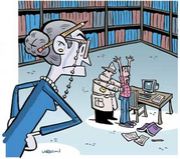November 23, 2001
BOOKS OF THE TIMES; A Gallery of Portraits, Always Intimate
By MICHIKO KAKUTANI
SACRED MONSTERS, SACRED MASTERS
Beaton, Capote, Dali, Picasso, Freud, Warhol and More
By John Richardson
363 pages. Random House. $27.95.
Reading John Richardson's new collection of profiles is like sitting down to dinner with an enormously charming and erudite dinner companion: someone equally at ease discussing the legacy of Cubism and Surrealism, or gossiping about a famous artist's impossible relatives; an accomplished raconteur by turns thoughtful and petulant, learned and bemused.
Though the slighter pieces in ''Sacred Monsters, Sacred Masters'' are little more than tossed-off magazine sketches, as fluffy and ephemeral as meringues, the best ones recall Mr. Richardson's masterly biography of Picasso (two volumes of which have appeared), leaving us with a keen appreciation of an artist's work and the mysterious transactions made between life and art.
There is a wonderfully succinct tribute to the late paintings of Braque, a tribute that conveys the spirituality and spatial magic of his work, while goading the reader to run to Mr. Richardson's earlier study of that Cubist master to learn more. There is also a wry but illuminating appraisal of ''the reluctant Surrealist'' Miró, in which Mr. Richardson notes that when the artist contrives a ''personage'' out of a foot or sex organ, ''he is not being arbitrary or whimsical; he is being a shaman and he is fashioning the equivalent of a fertility symbol.''
Like Picasso, whom Mr. Richardson knew when they were both living in the south of France, many of the subjects in this book were friends or acquaintances of the author, who once headed Christie's United States operation and worked at the Knoedler Gallery before becoming a full-time writer. As a result these profiles of painters, writers, taste makers and cultural impresarios have an unusual intimacy, heightened by Mr. Richardson's forthright willingness to declare his allegiances, prejudices and crotchets.
In one chapter he accuses Truman Capote -- with whom he once spent part of a summer, in the company of mutual friends -- of embracing ''gossip-columnist values,'' of becoming a ''little starstruck monster'' who was ''not going to forgive the beautiful people for being so beautiful, so remorselessly low-key with their mink-lined raincoats and their little dinners of tiny lamb chops and unborn vegetables.'' In another chapter he argues -- not all that persuasively -- that his old friend Andy Warhol simply ''fooled the world into believing that his only values were money, fame and glamour,'' that, deep down, he possessed a ''Slavic spirituality,'' ''an innocence and humility that was impregnable.''
Some of Mr. Richardson's subjects turn out to be eccentrics worthy of an Evelyn Waugh novel, and his sketches of them duly read like comical -- or not-so-comical -- short stories: the tale of the three virginal Stett heimer sisters, who became high priestess of bohemian New York in the 1920's; the story of the poisonous battle over the art dealer Paul Guillaume's estate, which ended in charges of attempted murder, blackmail, forgery and the Louvre's acquisition of a spectacular modernist collection at a bargain price; and the ballad of Bonnard's ''amphibious wife'' Marie, ''who spent much of her life soaking in a bathtub'' and who figured some 385 times in his paintings.
Albert Barnes, who assembled a daunting collection of Impressionist and Post-Impressionst paintings in Pennsylvania, which he then made virtually inaccessible to members of the art world, is described as having been ''almost as fearsome as Dr. Hannibal 'the Cannibal' Lecter.'' The Sitwells -- those British aesthetes and poseurs who in the 1920's tried to place themselves at the head of the English avant-garde -- are described as treating anyone who did not give them total allegiance with ''the kind of de haut en bas outrage that Margaret Dumont used on Groucho Marx.'' And the transsexual writer Jan Morris is described as becoming ''the reincarnation of Mrs. Miniver, that mid-20th-century quintessence of middle-aged, middle-brow, middle-class gentility.''
Mr. Richardson is not only a quick-sketch artist but a gifted appreciator as well, using his knowledge of modern art to give us a tactile sense of individual painters' works. He describes Bonnard as ''a distiller of genius'' who ''enables us to savor his intimate little world in essence much as the perfume distilleries behind his Riviera villa enable us to savor in essence the profusion of jasmine and orange blossom, roses and carnations in the neighboring flower farms.'' And writing about Paul Klee he conveys both the ''inordinate variety of his pictorial repertory'' -- botanical, mathematical, zoological, musical and anatomical -- and his temperamental inclination to ''reduce human experience to a celestial-toy-town level'': ''The cosmos envisioned in a teacup! The music of the spheres rendered on a glockenspiel!''
When Mr. Richardson dislikes his subjects or their work, the results tend to be less persuasive, often devolving into crude ad hominem attacks or gossipy innuendo. ''Hammer Nailed'' is a mean-spirited rant against Mr. Richardson's former boss, the financier and art collector Armand Hammer, a diatribe that owes a large debt to the Edward Jay Epstein book ''Dossier.'' As for the essay ''Dali's Gala,'' it is a smarmy attack on that Surrealist and his wife, an assault not confined to the painter's crassly opportunistic approach to his work in later years but focused almost voyeuristically on the couple's sexual proclivities.
The reader, however, can easily hop and skip over the lesser pieces. The other entries in ''Sacred Monsters'' remain delightfully entertaining, and at their best, artfully elucidating: welcome dispatches from Mr. Richardson while readers await the third volume of his magisterial biography of Picasso.
http://
BOOKS OF THE TIMES; A Gallery of Portraits, Always Intimate
By MICHIKO KAKUTANI
SACRED MONSTERS, SACRED MASTERS
Beaton, Capote, Dali, Picasso, Freud, Warhol and More
By John Richardson
363 pages. Random House. $27.95.
Reading John Richardson's new collection of profiles is like sitting down to dinner with an enormously charming and erudite dinner companion: someone equally at ease discussing the legacy of Cubism and Surrealism, or gossiping about a famous artist's impossible relatives; an accomplished raconteur by turns thoughtful and petulant, learned and bemused.
Though the slighter pieces in ''Sacred Monsters, Sacred Masters'' are little more than tossed-off magazine sketches, as fluffy and ephemeral as meringues, the best ones recall Mr. Richardson's masterly biography of Picasso (two volumes of which have appeared), leaving us with a keen appreciation of an artist's work and the mysterious transactions made between life and art.
There is a wonderfully succinct tribute to the late paintings of Braque, a tribute that conveys the spirituality and spatial magic of his work, while goading the reader to run to Mr. Richardson's earlier study of that Cubist master to learn more. There is also a wry but illuminating appraisal of ''the reluctant Surrealist'' Miró, in which Mr. Richardson notes that when the artist contrives a ''personage'' out of a foot or sex organ, ''he is not being arbitrary or whimsical; he is being a shaman and he is fashioning the equivalent of a fertility symbol.''
Like Picasso, whom Mr. Richardson knew when they were both living in the south of France, many of the subjects in this book were friends or acquaintances of the author, who once headed Christie's United States operation and worked at the Knoedler Gallery before becoming a full-time writer. As a result these profiles of painters, writers, taste makers and cultural impresarios have an unusual intimacy, heightened by Mr. Richardson's forthright willingness to declare his allegiances, prejudices and crotchets.
In one chapter he accuses Truman Capote -- with whom he once spent part of a summer, in the company of mutual friends -- of embracing ''gossip-columnist values,'' of becoming a ''little starstruck monster'' who was ''not going to forgive the beautiful people for being so beautiful, so remorselessly low-key with their mink-lined raincoats and their little dinners of tiny lamb chops and unborn vegetables.'' In another chapter he argues -- not all that persuasively -- that his old friend Andy Warhol simply ''fooled the world into believing that his only values were money, fame and glamour,'' that, deep down, he possessed a ''Slavic spirituality,'' ''an innocence and humility that was impregnable.''
Some of Mr. Richardson's subjects turn out to be eccentrics worthy of an Evelyn Waugh novel, and his sketches of them duly read like comical -- or not-so-comical -- short stories: the tale of the three virginal Stett heimer sisters, who became high priestess of bohemian New York in the 1920's; the story of the poisonous battle over the art dealer Paul Guillaume's estate, which ended in charges of attempted murder, blackmail, forgery and the Louvre's acquisition of a spectacular modernist collection at a bargain price; and the ballad of Bonnard's ''amphibious wife'' Marie, ''who spent much of her life soaking in a bathtub'' and who figured some 385 times in his paintings.
Albert Barnes, who assembled a daunting collection of Impressionist and Post-Impressionst paintings in Pennsylvania, which he then made virtually inaccessible to members of the art world, is described as having been ''almost as fearsome as Dr. Hannibal 'the Cannibal' Lecter.'' The Sitwells -- those British aesthetes and poseurs who in the 1920's tried to place themselves at the head of the English avant-garde -- are described as treating anyone who did not give them total allegiance with ''the kind of de haut en bas outrage that Margaret Dumont used on Groucho Marx.'' And the transsexual writer Jan Morris is described as becoming ''the reincarnation of Mrs. Miniver, that mid-20th-century quintessence of middle-aged, middle-brow, middle-class gentility.''
Mr. Richardson is not only a quick-sketch artist but a gifted appreciator as well, using his knowledge of modern art to give us a tactile sense of individual painters' works. He describes Bonnard as ''a distiller of genius'' who ''enables us to savor his intimate little world in essence much as the perfume distilleries behind his Riviera villa enable us to savor in essence the profusion of jasmine and orange blossom, roses and carnations in the neighboring flower farms.'' And writing about Paul Klee he conveys both the ''inordinate variety of his pictorial repertory'' -- botanical, mathematical, zoological, musical and anatomical -- and his temperamental inclination to ''reduce human experience to a celestial-toy-town level'': ''The cosmos envisioned in a teacup! The music of the spheres rendered on a glockenspiel!''
When Mr. Richardson dislikes his subjects or their work, the results tend to be less persuasive, often devolving into crude ad hominem attacks or gossipy innuendo. ''Hammer Nailed'' is a mean-spirited rant against Mr. Richardson's former boss, the financier and art collector Armand Hammer, a diatribe that owes a large debt to the Edward Jay Epstein book ''Dossier.'' As for the essay ''Dali's Gala,'' it is a smarmy attack on that Surrealist and his wife, an assault not confined to the painter's crassly opportunistic approach to his work in later years but focused almost voyeuristically on the couple's sexual proclivities.
The reader, however, can easily hop and skip over the lesser pieces. The other entries in ''Sacred Monsters'' remain delightfully entertaining, and at their best, artfully elucidating: welcome dispatches from Mr. Richardson while readers await the third volume of his magisterial biography of Picasso.
http://
|
|
|
|
コメント(2)
‘キュービズムやシュールレアリスムの伝統を議論するのと同じように、芸術家の変わり者な親戚のゴシップを気楽に、しかしウィットとスキルを持っておしゃべりしたりもする’‘すごく魅力的で深い知識を備えた話し手と一緒にディナーをしているような気分になる本’だそうです。ピカソの優れた伝記も著したという著者は、アーティストや作家、アートディーラーなどについてのエピソードを本書に収めているとのこと。
中には雑誌的な軽いノリのやつもあるそうですが、大半は芸術作品の深遠さや、人生と芸術の謎に満ちた関係を読者に感じさせるとの評価(Braque, Miro, Bonnardなど)ですが、‘いい本’‘好きな本’あるいは‘好きな作家’の書評するときのKakutaniさんの文体って分かる気がしてきました。読者に対して書いていると同時に、この書評を真っ先に読むに違いない作家に対して書いているような、そんな印象があるんです。辛辣な書評家というよりは、アートと文学が大好きな女学生のようにもなるKakutaniさんは、なんだか微笑ましいですね。
実際、この本はなかなか興味深そう。書かれているほとんどの人物と作者は知り合いか友達で、例えば夏に友人らと一緒に過ごしたトルーマン・カポーティについては、よく言われていることですが ''gossip-columnist values,'' を持っていて、‘美しい人々をその美しさゆえに許さなかった。彼らが着ていた毛皮で縁取られたレインコートや、小片のラムチョップと野菜の、わずかばかりのディナーを冷酷に観察した…’んだそうです。あるいは古くからの友人アンディ・ウォーホルについては、‘彼の価値観はお金と名声と外見的な魅力だけだと人々に信じ込ませて、からかっていた’と言い、‘しかし深い内面ではスラブ的な精神性、つまり純粋さと謙遜の気持ちを確固として持っていた’と。
ただ、著者は嫌いな対象に対しては、あまり熱心じゃなくなり、しばしば人物そのものに対する攻撃となったり、ゴシップ的な皮肉に終始してしまうそうです…。
しかし、これは全体の中のわずかなページでしかないとKakutaniさんはかばっていますが……下のThe Guardian紙の同書の書評を読むと、かなり温度差があって面白いかも。。
‘sadistic pleasure in robbing them of any pretension to divinity’で、‘Beneath all the satire there is a possibly tragic realisation: the awareness that the beauty of an artist's work can coexist with an ugly life, since greatness and goodness are seldom allied’と、著者は芸術家たちからその神聖さを剥ぎ取ることにサディスティックな喜びを見出している。そして読者に、芸術の美と人生の醜悪さは共存できると気づかせる…のだそうです。。
http://books.guardian.co.uk/critics/reviews/0,,619287,00.html
それにしても、黒い表紙の本多いですよね。日本ではあんまり好まれないけど。。
中には雑誌的な軽いノリのやつもあるそうですが、大半は芸術作品の深遠さや、人生と芸術の謎に満ちた関係を読者に感じさせるとの評価(Braque, Miro, Bonnardなど)ですが、‘いい本’‘好きな本’あるいは‘好きな作家’の書評するときのKakutaniさんの文体って分かる気がしてきました。読者に対して書いていると同時に、この書評を真っ先に読むに違いない作家に対して書いているような、そんな印象があるんです。辛辣な書評家というよりは、アートと文学が大好きな女学生のようにもなるKakutaniさんは、なんだか微笑ましいですね。
実際、この本はなかなか興味深そう。書かれているほとんどの人物と作者は知り合いか友達で、例えば夏に友人らと一緒に過ごしたトルーマン・カポーティについては、よく言われていることですが ''gossip-columnist values,'' を持っていて、‘美しい人々をその美しさゆえに許さなかった。彼らが着ていた毛皮で縁取られたレインコートや、小片のラムチョップと野菜の、わずかばかりのディナーを冷酷に観察した…’んだそうです。あるいは古くからの友人アンディ・ウォーホルについては、‘彼の価値観はお金と名声と外見的な魅力だけだと人々に信じ込ませて、からかっていた’と言い、‘しかし深い内面ではスラブ的な精神性、つまり純粋さと謙遜の気持ちを確固として持っていた’と。
ただ、著者は嫌いな対象に対しては、あまり熱心じゃなくなり、しばしば人物そのものに対する攻撃となったり、ゴシップ的な皮肉に終始してしまうそうです…。
しかし、これは全体の中のわずかなページでしかないとKakutaniさんはかばっていますが……下のThe Guardian紙の同書の書評を読むと、かなり温度差があって面白いかも。。
‘sadistic pleasure in robbing them of any pretension to divinity’で、‘Beneath all the satire there is a possibly tragic realisation: the awareness that the beauty of an artist's work can coexist with an ugly life, since greatness and goodness are seldom allied’と、著者は芸術家たちからその神聖さを剥ぎ取ることにサディスティックな喜びを見出している。そして読者に、芸術の美と人生の醜悪さは共存できると気づかせる…のだそうです。。
http://books.guardian.co.uk/critics/reviews/0,,619287,00.html
それにしても、黒い表紙の本多いですよね。日本ではあんまり好まれないけど。。
- mixiユーザー
- ログインしてコメントしよう!
|
|
|
|
Michiko Kakutani 更新情報
-
最新のイベント
-
まだ何もありません
-
-
最新のアンケート
-
まだ何もありません
-
Michiko Kakutaniのメンバーはこんなコミュニティにも参加しています
人気コミュニティランキング
- 1位
- カラオケ「町田オフ」
- 982人
- 2位
- 暮らしを楽しむ
- 75437人
- 3位
- 酒好き
- 170644人
























